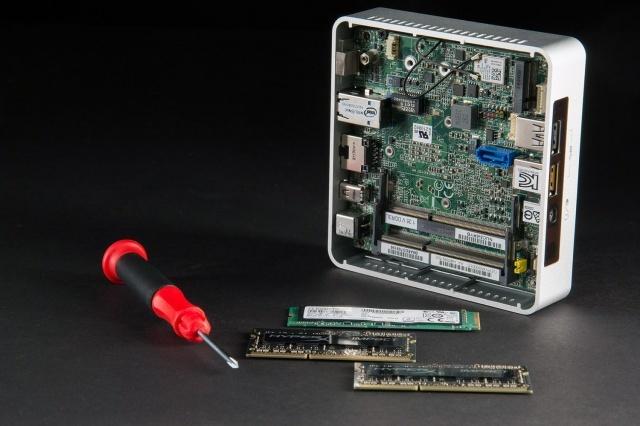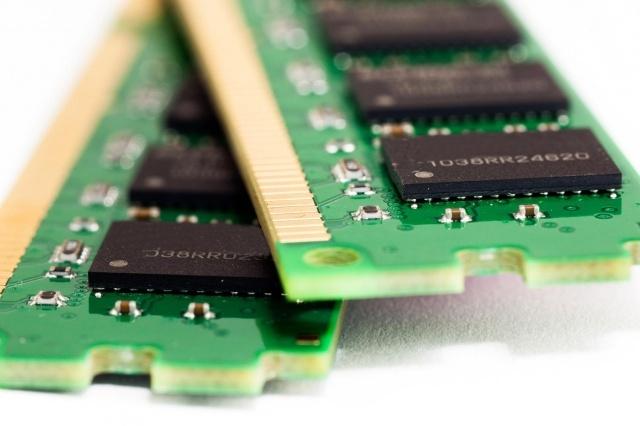Random
Access Memory, usually shortened to “RAM” or simply “memory,” is one of
the most important parts of any computer. But how much do you need?
Current new PCs and similar devices range from around the two gigabyte
mark to 16GB or more.
How
much memory you really require will depend on two factors — how much
you want to do, and how much you’re willing to spend. This article will
focus on computers running a desktop operating systems like Windows, Mac
OS X, Linux, or
Chrome OS.
An introduction to RAM
Memory capacity is often confused with the long-term storage offered by
a solid state or mechanical hard drive.
Sometimes even manufacturers or retailers will mix up these terms. A
desk is a useful analogy to consider the difference between memory and
storage. Think of RAM as the top of the desk. The bigger it is, the more
papers you can spread out and read at once. Hard drives are more like
the drawers underneath the desk, capable of storing papers you’re not
using.
The
more RAM your system has, the more programs it can handle
simultaneously. RAM isn’t the only determining factor, and you can
technically open dozens of programs at once even with a very small
amount of RAM, but doing so will slow your system down. Think of the
desk again. If you have far too many papers on it, it becomes cluttered,
and your work will slow as you try to find whatever paper you need at a
particular moment. You’ll be forced to frequently dig into the drawers
to store what won’t fit on top of the desk and retrieve papers you need.
A computer with more RAM might feel like
it’s performing faster, especially when you use many programs at once,
but more memory doesn’t actually increase its processing speed. Only a
faster CPU can do that. More RAM won’t increase the amount of files or
programs your computer can hold, either. That’s what the desk drawers —
the hard drive or solid state drive – are for.
Standard RAM shouldn’t be confused with video memory, a statistic associated with
computer video cards.
High-end 3D games rely on video RAM, usually expressed as “GDDR3” or
similar, whereas standard memory will simply be referred to as memory,
RAM or DDR3/4.
RAM-heavy applications
The biggest RAM-hogs on
most
home computers are the operating system itself and the web browser.
There’s not much you can do to make Windows or OS X use less memory, but
more RAM in your computer means that you can have more
browser tabs open in Chrome, Firefox, Internet Explorer,
et cetera. In addition, some websites will use more RAM than others. A
simple text news story is relatively light on memory, while something
like Gmail or Netflix uses quite a lot.
(Bill Roberson/Digital Trends)
Other
programs tend to use more RAM as they increase in complexity. A chat
program or a game like Minesweeper will use almost no RAM, while a
gigantic Excel spreadsheet or a huge Photoshop project might use more
than a gigabyte all by itself. Modern 3D games also use quite a lot of
RAM — often three or four gigabytes, and some use a bit more than that.
That
means your need for RAM is entirely dependent on the programs you use.
Let’s say you have two Windows computers, one with two gigabytes of RAM,
and one with sixteen, that are otherwise identical. If you have no
programs open they’ll operate similarily. Load a big Excel spreadsheet,
though, and only the latter will still seem responsive.
Choosing RAM for PC tablets
Most
Windows tablets will come with somewhere between two and four gigabytes
of RAM. This is enough for basic tasks only. A few browser tabs, some
email, and one video at a time is fine, but heavy multitasking will
quickly become frustrating on most tablets. Because basic PC tablets are
intended for these specific light-duty tasks, they’re usually fine
(though not exactly quick) with two to four gigabytes.
A
few more expensive Windows tablets (usually ones that use Core i3
processors or better) are more similar to laptops without the keyboard.
In these machines, try to get as much RAM as your budget will allow. For
example,
Microsoft’s Surface Pro
series comes with up to 8GB. If you intend to use your tablet for
occasional work or intense web browsing sessions, it might be worth the
upgrade.
Choosing RAM for laptops
New
laptops start at two gigabytes of RAM (especially for budget machines
and Chromebooks) and go up to eight gigabytes, with some very expensive
models offering 12 or 16GB. Systems towards the bottom of this scale are
suited only to general web browsing, email, video, and perhaps some
casual gaming.
Four
gigabytes is about as low as you want to go in Windows or OS X. This is
an ideal combination of capability and price for most people. If you
intend to run dozens of browser tabs at once, or you plan to do more
intensive tasks like high-resolution photo editing, consider a bump up
to eight gigs.
An
upgrade from 4GB to 8GB usually costs about $100 from the manufacturer,
but can be more expensive if it’s paired with a faster processor or
bigger storage drive. 12GB or more is ideal for powerful laptops often
referred to as “desktop replacements,” and is usually only available in
the most expensive models.
Choosing RAM for desktops
Small
desktop PCs and inexpensive all-in-one models actually have more in
common with laptops than typical “tower” PCs, and might come with as
little as two gigabytes of memory. Again, four gigabytes is about as low
as you want to go for a traditional computer.
RAM
for desktops is less expensive than RAM for tablets or laptops, so it’s
often easier to find computers with more memory at lower prices. Eight
gigabytes is a comfortable middle ground for desktops. If you’re
planning on using it as your primary work machine, especially for
intense programs or dozens of browser tabs, Office documents, and
similar uses, consider upgrading to 12 or 16GB.
For
the tip top of the desktop world, the sky’s the limit. The most
expensive desktops can handle huge amounts of RAM, up to 64GB or more.
Most users won’t be able to effectively use more than 16GB even if they
try, but high-end programs like 3D modeling or 4K video editing may
benefit from these pricey upgrades.
Conclusion
In
summary, two gigabytes should be considered the bare minimum, and is
only suited for entry-level specialty tablets and laptops, like
Chromebooks. Four gigabytes is the comfortable minimum for a Windows or
OS X machine, and eight gigabytes provides room to grow. Anything beyond
that is only of interest to enthusiasts and power users.
HTHC Notes: I disagree with some of the points here. To run Windows 8.1 or Mac OS Yosemite, less than 8GB's of memory ensures a completely useless system. When pricing a computer, remember that upgrading a 4GB system (2x 2GB ram sticks) means discarding this memory and replacing it with 8GB's (2x 4GB's ram sticks). Price the memory online making sure the memory you are looking at will work in your system. If it is an Apple computer, ensure that the memory is Apple compatible.
Tablets with less than 16GB's of storage will become full before you know it. Look for tablets that allow you to add more storage by inserting a micro SDD. Cheaper tablets and iPads do not have this feature. Most Android tablets have this ability.
I have the same advice for Smartphones. The entry level Smartphone with just 8GB's will fill rapidly. Smartphones with the ability to add a micro SDD are preferred. iPhones do not have this feature. Samsung Galaxy S5's do. The recently released Samsung Galaxy S does not.
Are advice on what type of computer, Smartphone or tablet to buy is free.
Need help upgrading your device with more memory?
This is something we are expert at. We can help determine the best upgrade for you, obtain the right memory to work with your device and install it without blowing up your device.
Related Posts: Android,
iPhone,
Mac OS,
Tablet,
Windows














